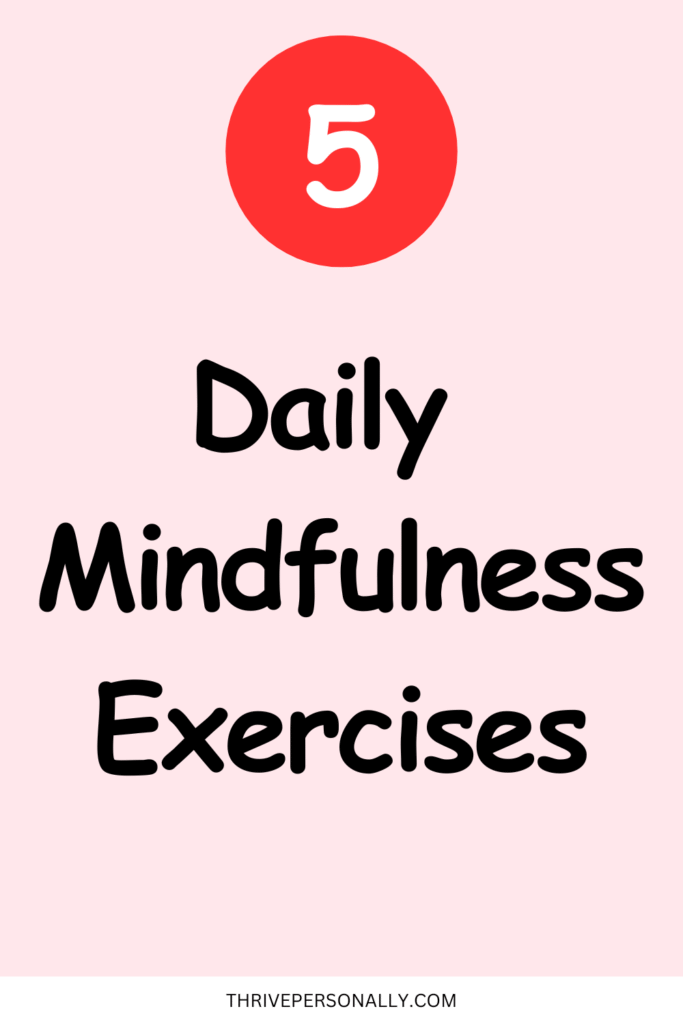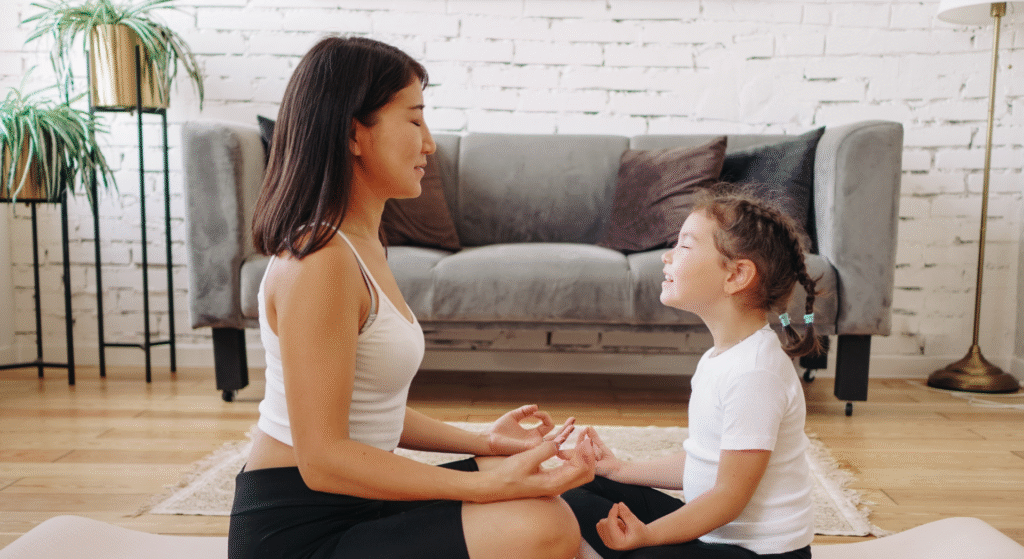You are always filled with ideas in the modern world. Your mind is all turned to tomorrow. Today, you are considering whether it will ever rain again, and you do not notice what is going on at the moment. That is where mindfulness helps.
Mindfulness is being aware of the present moment with intention. It means knowing where you are, what you are doing, and how you feel—without trying to judge or fix anything.
Being mindful does not require you to sit still for hours or do something special. You can practice it in your daily routine. It’s not a big task—just a small shift in focus. When you learn to turn your attention to the present moment, your mind becomes more relaxed, focused, and less stressed. You start to appreciate life instead of rushing through it.
This post shares five simple mindfulness activities you can do anytime and anywhere. No tools are needed. Just your breath, your body, and your desire to be present.
5 Daily Mindfulness Exercises to Enhance Your Well-Being
1. Mindful Breathing
You breathe every moment of your life, yet you’re rarely aware of it. Mindful breathing means paying attention to each breath in and out. You don’t need to change anything. Just notice your breathing.
You can do this while sitting, standing, walking, or lying down. Focus for even five minutes or less. What matters is your attention. Your thoughts will drift—just gently bring your focus back to your breath.
Being aware of your breathing helps calm your mind. It also relaxes your muscles and eases worry or fear. This is especially helpful during stressful times or when your thoughts feel crowded.
Research from the American Psychological Association shows that mindfulness meditation, especially breath-focused, helps reduce stress and improve emotional well-being.
Read also: 50 Mindfulness Quotes for Finding Peace
2. Mindful Eating
How often do you take a bite and swallow without even tasting your food? You’re distracted by screens, scrolling through news, or thinking about your to-do list. Mindful eating is putting your full attention on the food in front of you. You slow down and notice the colors, smells, tastes, and textures. It’s about being present while you eat.
When you eat mindfully, you enjoy your food more. Your body also becomes better at telling you when you’re full, which helps avoid overeating. You become more aware of your relationship with food—what works and what doesn’t feel right for you.
To try this, spend a few minutes each day eating in silence. Choose one meal or snack. Turn off your screen. Sit down. Take small bites. Chew slowly. Notice how it feels in your mouth. Be curious, not judgmental. If your mind wanders, return to the taste.
You’re not aiming for perfection. You’re just trying to be present.
Read also: How to Calm Your Mind When Stressed – 8 step
3. Mindful Walking
Walking is something you usually do on autopilot. You’re moving quickly, getting somewhere, and your mind is racing. But walking can become a chance to connect with your body and your surroundings.
Mindful walking means paying attention to each step. Feel your feet touch the ground. Notice how your legs move. Observe your breath. Tune into the sounds around you. Feel the air on your skin. Walking becomes a moment of peace.
You can practice this on your way to the bus stop, during a break at work, or while heading home. You don’t need a special trail. Just walk with awareness.
This practice slows your racing thoughts and helps you feel more grounded in your body. It also brings stability during stressful times.
A study in the Mindfulness Journal found that mindful walking can reduce anxiety and improve mood, especially for people living with emotional stress.
Read also: 9 Habits That Help You Control Your Mind
4. Body Scan
Much of your stress sits in your body. Sometimes, you don’t even notice the tension until your head aches or your shoulders are tight. A body scan helps you become aware of your body part by part.
Find a quiet place to sit or lie down. You can close your eyes if you’re comfortable. Start by noticing your breath. Then focus on your feet. How do they feel? Are they warm or cold? Heavy or light? Slowly bring your focus up—legs, hips, back, shoulders, arms, neck, and head.
Don’t try to change anything. Just observe. If you feel pain or tightness, notice it without judgment. If you feel comfort or ease, note that too. The goal is to listen to your body and what it may be telling you.
Body scans help release tension and bring your mind and body back into balance. Over time, you’ll feel more at peace and more in tune with what you need.
5. Mindful Breaks Throughout the Day
Sometimes, the best mindfulness practice is simply taking a pause. In the middle of a busy day, stop for just one full minute. Don’t check your phone. Don’t talk to anyone. Just pause and breathe.
You can close your eyes or look out the window. You can place your hand over your heart or feel your breath in your belly. It’s like pressing a reset button for your mind.
Taking short mindful pauses helps you respond to life instead of reacting. You begin to notice things rather than rushing past them. You give your nervous system a rest. And even in your busiest moments, you find a little space for calm.
Many people who practice mindfulness daily say these small breaks matter most. They feel more centered and better able to handle tough moments.
Mindfulness in Everyday Life
The best part about mindfulness is that you don’t need anything new. You don’t have to buy anything or change your life. You just have to pay attention.
You can be mindful while brushing your teeth. While washing dishes. As you tie your shoes. Mindfulness is not an extra task—it fits into what you already do.
All it takes is gentle practice. Your mind will wander. You will forget. That’s okay. Every time you return to the moment, you’re growing your awareness—and from that comes peace, strength, and clarity.
Mindfulness is not an escape from life. It’s a way to live—with open eyes, steady breath, and a clear mind.
Final Thoughts
Breathing, eating, walking, body scanning, and pausing—these five mindfulness exercises are simple, but powerful. They bring you back to yourself. They remind you that you are not your thoughts, your stress, or your to-do list. You are the one who notices. You are the one who breathes.
You can start with just one of these practices a day. Even one minute is enough. Then build from there. The more you practice, the easier it becomes. Over time, you may find life feels less rushed, more peaceful—because you learned how to be right where you are.
Save the pin for later



